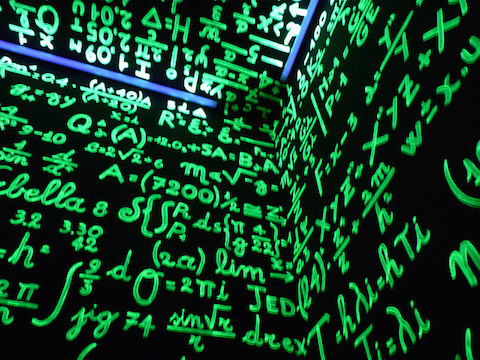The 6 benefits of thinking like a mathematician

When I was young, I was certain I would be a mathematician. I still think like one. You should, too — and you don’t have to learn math to do it.
A little background: I was an outstanding math student in high school and college, won an NSF Fellowship, and entered the math Ph.D. program at MIT. After three years there, I gave it up for a tech writing job and pursued a career in business. (My teachers thought I was crazy.)
The persistent habits of mathematical thinking have changed the way I analyze things, even now, 34 years after I ceased to study math. Interestingly, those habits don’t have to do with the concepts of higher mathematics — and they’re probably not what you imagine. You can think this way, too, regardless of your level of mathematical skill. (If more people did, I don’t think our country would be in the fix it is in.) Try these on for size:
- Prioritize reason over passion. Mathematical proof does not depend on what you want to be correct. It depends on a clear, bulletproof set of steps that lead you from what is known to what is unknown. In areas like nutrition or economics, people fight about conclusions and researchers reverse findings — and bias colors results (liberal economists get different conclusions from conservative ones). By contrast, it’s extremely rare for mathematicians to have to reverse a result. This dispassionate, fact-based reasoning helps in business and politics, too, but you have to start by recognizing that you may reach a conclusion you don’t like.
- Recognize that all reasoning depends on assumptions. Scientists seek truth. Mathematicians don’t. They just seek truth relative to starting assumptions. They know that angles on a triangle add up to 180 degrees only if you assume that you’re on a flat plane — on a sphere, they can add up to 270 degrees or more. When you’re reasoning (or critiquing reasoning) about the world, always question the starting assumptions. Different assumptions lead to different results.
- Believe you could be wrong. When a mathematician sets out to prove a conjecture, there are two possible results. One is that it’s provable. The other is that there is a counterexample, showing that the conjecture is wrong. (The third possibility — that you can’t prove it either way, we try not to talk about.) If the result is unknown, you must work both sides — find a proof, or find a counterexample. Pursuing both possibilities creates clarity and progress. You’ve got to research how you might be wrong.
- Value intuition and ideas. People think mathematicians are about logic. They’re not. Mathematicians have big ideas in their head that inspire what they research — their proofs spring from that intuition. (One prof I had used to write the intuitive story on a separate blackboard, so we could see where the ideas behind the proofs came from.) There is no contradiction between powerful ideas and locked-down reasoning — you need the ideas to inspire you, and the reasoning to prove you are right
- Question numbers. The relationship between mathematics and the real world is fuzzy. Mathematical concepts have nice clear answers, while real-world results have uncertainty. When you connect the two, you must know where the uncertainty comes from and what its consequences are. Bring the same skepticism to any numbers you read or measure. Polls are not truth. Economic estimates are not truth. And nothing is exact.
- Model things. I found an amazing thing once I landed in business. Using nothing but a spreadsheet, with formulas based only on addition, subtraction, multiplication, division, and percentages, I could model the real-world. Those models generated insights that weren’t available any other way. So now I model everything from consumer segments to Supreme Court nominees. Without a model, your projections about the future are mushy. (With a model, they’re imprecise, but at least you can see where the imprecision comes from.)
I love to talk to other people who think this way. I love to use these tools to raise the level of discussion, even for people who don’t think this way. As for true believers who eschew this type of reasoning — I’m not so fond of arguing with them.
You have really given me something to chew on here and from a person who has long run from numbers.
It’s not clear that political orientation causes serious economists to see evidence in different ways. The causality might go in reverse. If I interpreted the evidence on how people and businesses respond to taxes and government t policies the way my conservative friends do, my policy views would move to the right because it would mean the costs of progressive tax policy or macro interventions would exceed the benefits. There’s certainly bias at the fringes, but I think serious economists try to see past their biases and preconceptions. That said, it’s certainly true that real world economics rarely meets the standard of mathematical proof. Which is probably why so many economists are drawn to mathematical modeling of tidy alternative realities.
There’s a wonderful anecdote about an economIst who changed his mind when he worked out the math. Ken Arrow’s “impossibility theorem” was supposed to be the “possibility theorem.” https://en.m.wikipedia.org/wiki/Arrow%27s_impossibility_theorem
Your blog followers who want to pursue this idea may enjoy Jordan Ellenberg’s 2014 book, “How Not to Be Wrong: The Power of Mathematical Thinking.” It presumes a general training in mathematics, but its ideas are accessible even to the innumerate.
For the mildly pedantic, it’s also a fun book to have on your coffee table …